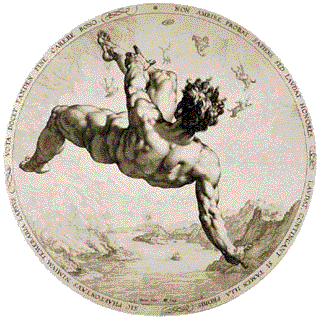by Anonymous compiler
Very good. 8vo. Green cloth album of 16 leaves on which 53 original botanical specimens have been affixed by means of glue, thread, and portions of gummed bank stamps (hinges cracked, first blank leaf excised). Added: International Ocean Telegraph Co. form, along with additional specimens laid in. CREATED OVER A PERIOD OF TWENTY YEARS, THIS IS AN EXCEPTIONAL, VERY PERSONAL HERBARIUM COMPILED BY A WOMAN WHO TRAVELED ALL OVER THE WORLD COLLECTING INTERESTING AND UNUSUAL PLANTS, AND RECORDED HER THOUGHTS AND LOCATIONS HEREIN, ALONG WITH REFLECTIVE POETRY.
Our album was compiled by one "Lucy" and contains 53 actual specimens from all over the globe. Such an album as this can only be described as a botanical "Wunderkammer," a true cabinet of curiosities in book form. The present album is not only important for the study of botany, but is a striking example of the most extreme form of "nature printing."
While the specimens date from 1883 to 1903, the majority of them were collected from 1886 to 1891. Represented in the United States is the region west of the Mississippi, Hawaii, and New England, but her travels took her to Mexico, England, Switzerland, Italy, Greece, Palestine, and even Japan. Our compiler very usefully recorded her locations, ranging from Greek and Roman ruins to hotels. She also included one particularly non-botanical item, namely as a piece of actual gold "just as taken" from a mine in California. Beside this piece of gold is written the name Lucy.
Clearly she was a most remarkable woman traveler who must have been possessed of considerable means. Here unusually broad and refined interests are reflected throughout the entire album. Her visit to Helen Hunt Jackson’s grave in the Cheyenne Mountains is celebrated along with the graves of Virgil and Longfellow, and a monument to Thomas Gray at Stoke Poges (where he penned his famous "Elegy in a Country Churchyard"). There are three trade cards from Henry and Margaret Brainard, editors of the San Jose-based Pacific Tree & Vine, all accompanied by specimens tied with colored ribbon. We find also her transcriptions of poetry.
Japan is well represented in the album, with a daisy from near Miyanoshita and no less than thirteen other specimens from Hachimanau, Kamakura, Dibo kujia, Tokyo, Kiga, Kyoto, Kasuga-no-miya. There is also a coffee plant from Orizalon, Mexico (1889); a Lily Star of Bethlehem; a Willow from the banks of the River Jordan; specimens from Virgil’s tomb and the great Roman ruins; the Mountain mahogany from Sierra Nevada mountains, en route Yosemite (1886).
At the time our album was created there was a particular flourish for "domesticating the wildness" of nature, particularly among women, by means of pressing flowers and plants into books, an act of "freezing" life for posterity. An album such as this reflects not only a fascination with flora but a desire to form the natural world into a very personal expression.
While Victorian and late-Victorian Herbarium albums are not uncommon, they are rarely found containing specimens collected from around the globe, as here. Ours is preserved in extremely good condition and is SUITABLE FOR EXHIBITION AND STUDY. (Inventory #: 4384)
Our album was compiled by one "Lucy" and contains 53 actual specimens from all over the globe. Such an album as this can only be described as a botanical "Wunderkammer," a true cabinet of curiosities in book form. The present album is not only important for the study of botany, but is a striking example of the most extreme form of "nature printing."
While the specimens date from 1883 to 1903, the majority of them were collected from 1886 to 1891. Represented in the United States is the region west of the Mississippi, Hawaii, and New England, but her travels took her to Mexico, England, Switzerland, Italy, Greece, Palestine, and even Japan. Our compiler very usefully recorded her locations, ranging from Greek and Roman ruins to hotels. She also included one particularly non-botanical item, namely as a piece of actual gold "just as taken" from a mine in California. Beside this piece of gold is written the name Lucy.
Clearly she was a most remarkable woman traveler who must have been possessed of considerable means. Here unusually broad and refined interests are reflected throughout the entire album. Her visit to Helen Hunt Jackson’s grave in the Cheyenne Mountains is celebrated along with the graves of Virgil and Longfellow, and a monument to Thomas Gray at Stoke Poges (where he penned his famous "Elegy in a Country Churchyard"). There are three trade cards from Henry and Margaret Brainard, editors of the San Jose-based Pacific Tree & Vine, all accompanied by specimens tied with colored ribbon. We find also her transcriptions of poetry.
Japan is well represented in the album, with a daisy from near Miyanoshita and no less than thirteen other specimens from Hachimanau, Kamakura, Dibo kujia, Tokyo, Kiga, Kyoto, Kasuga-no-miya. There is also a coffee plant from Orizalon, Mexico (1889); a Lily Star of Bethlehem; a Willow from the banks of the River Jordan; specimens from Virgil’s tomb and the great Roman ruins; the Mountain mahogany from Sierra Nevada mountains, en route Yosemite (1886).
At the time our album was created there was a particular flourish for "domesticating the wildness" of nature, particularly among women, by means of pressing flowers and plants into books, an act of "freezing" life for posterity. An album such as this reflects not only a fascination with flora but a desire to form the natural world into a very personal expression.
While Victorian and late-Victorian Herbarium albums are not uncommon, they are rarely found containing specimens collected from around the globe, as here. Ours is preserved in extremely good condition and is SUITABLE FOR EXHIBITION AND STUDY. (Inventory #: 4384)















![[ORIGINAL ART PHOTOGRAPH].](https://d3525k1ryd2155.cloudfront.net/h/634/416/1681416634.0.m.jpg)